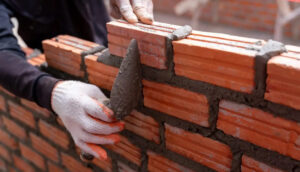Digital Marketing Agency provides various services to help businesses reach their target audience. They can help with web design, content creation, and even search engine optimization. They can also help with social media management and video production.

Hiring a digital marketing agency can save time and money by providing consistent, high-quality service. However, it’s essential to understand what you are getting for your money.
Digital marketing agencies can be very cost-effective for businesses. They can save you money by eliminating the overhead costs associated with employing an in-house team. These costs include salaries, benefits, training, and equipment purchases. In addition, many digital marketing agencies offer performance-based pricing that enables you to pay for only what you need. This helps you to achieve a strong ROI on your marketing investments.
Hiring a full-time marketing manager can be expensive, especially if you need someone with skills in web design and development, SEO, content creation, social media, email, advertising, and more. It’s also difficult to find one person who can do everything well, and keep up with the latest changes in each area of marketing. Digital marketing agencies provide a team of experts in each area, all under one roof.
A good digital marketing agency will know your audience and what kind of content they want to see. They can use this information to create targeted campaigns that will resonate with potential customers. This results in higher engagement rates, increased conversions, and a strong return on investment.
Another advantage of working with a digital marketing agency is that they can offer you a range of services at a lower price than hiring an in-house team. For example, they can provide pay-per-click advertising on platforms like Facebook or Google. This type of advertising is very effective in generating sales and traffic, but it can be very expensive if you’re not careful. A digital marketing agency can help you manage your budget and make the most of your budget by providing expert advice.
A digital marketing agency can also be a great investment for small businesses that don’t have the resources to hire a full-time marketing department. These agencies can produce high-quality creative assets for a fraction of the cost that you would spend on an in-house team. They can also manage your online reputation and increase traffic to your website. Additionally, they can create a comprehensive marketing strategy that will deliver measurable results. This type of strategy will enable you to reach a wider audience and grow your business.
Expertise
A digital marketing agency is a team of experts who help businesses increase their online sales. They have experience in many aspects of digital marketing, including search engine optimization, email marketing, and social media marketing. They can also create and manage online advertising campaigns, analyze data, and provide feedback on campaign performance. They can help companies identify problems and make changes to improve their digital marketing strategies.
The best digital marketing agencies will have a strong understanding of your business goals and target audience. They will be able to use their expertise to craft a strategy that will work for your company and your budget. In addition, they will be able to deliver results that are measurable and accountable. They will also be able to help you build brand awareness and generate leads.
As a small business owner, it is important to find a digital marketing agency that understands your needs and can offer solutions that will help you achieve your objectives. They should be able to work with you on a long-term basis to build an effective marketing program. They should also be able to develop and implement a comprehensive and integrated digital marketing strategy.
Digital marketing agencies are a great resource for businesses that don’t have the internal resources to handle their own marketing efforts. These agencies can provide a variety of services under one umbrella, including web design and development, apps, social media marketing, SEO, PPC, and content creation. They will often have a liaison assigned to their clients, who will keep them updated on their progress through meetings and reports.
In addition to providing their own services, digital marketing agencies can also help businesses with their legal and financial affairs. They can assist with taxation, help businesses register for markups and discounts, and ensure that they comply with local regulations. They can even open a bank account for the agency, which simplifies accounting and financial tracking.
Time
Digital marketing agencies are a great way to grow your business. They can help you with all aspects of online marketing, including SEO, PPC, and content marketing. They can also create and execute a complete marketing strategy for your business. They can even help you with the technical details of your website, so you don’t have to worry about getting started on your own. Digital marketing is a highly competitive field, so it’s important to do your research and choose an agency that can offer the best results for your budget.
There are different types of digital marketing agencies, ranging from single-channel to full-service. Single-channel agencies are specialists in a particular aspect of digital marketing, such as social media management or search engine optimization. They can deliver one-of-a-kind results to their clients and dominate a specific marketing channel. Multi-channel agencies, on the other hand, are a bit more versatile and can handle multiple marketing channels.
To start a successful digital marketing agency, you’ll need to find and hire the right talent. Whether you need freelancers for specific skillsets or to fill in gaps in your team, Upwork is a great resource for finding professional digital marketing experts. Digital marketing is a fast-changing industry, and you’ll need to stay up-to-date on the latest trends to keep your agency profitable.
Another important factor is to establish a streamlined workflow and processes. This can improve your productivity and save you time and money. Additionally, you should use a tool like Loom to record video calls with your clients, which will replace lengthy emails and save you both time and money.
As a new digital marketing agency, you may not have a lot of capital to invest in your company. This is okay, but it’s important to have a plan for how you will make your business profitable and sustainable. For example, you should focus on client acquisition, retention, and revenue. You should also set clear goals for your agency and monitor the progress of your marketing campaigns.
Starting a digital marketing agency can be challenging, but it’s possible to become successful with the right preparation and planning. If you’re ready to take the plunge, the right digital marketing agency can be a great way to build your brand and increase your sales.
Experience
If you’re considering starting your own digital marketing agency, it’s important to understand the challenges and risks associated with it. The good news is that if you’re prepared to put in the work, it’s possible to thrive in a digital marketing agency setting. To do so, you’ll need to have a strong understanding of the digital marketing landscape and your target audience. This will help you create campaigns that are more likely to succeed. You’ll also need to know what tools and resources you need for success, such as Google Analytics, Zapier, and other business apps.
A digital marketing agency can be an invaluable resource for a business looking to expand its online presence and reach. These agencies offer a wide range of services, from social media management to web design and SEO. They can also assist with content creation and ad campaign development. In addition, they can provide advice on the best strategy for your business and how to use different marketing channels.
Working with a digital marketing agency can be a cost-effective way to reach your target audience. These companies can provide you with a full-service marketing solution that will take the burden off your company and allow you to focus on your core business. They also have extensive experience and knowledge of the marketing industry and are up-to-date on current trends and technology.
In addition to their technical expertise, digital marketing agencies can save businesses thousands of dollars by producing high-quality creative assets. They have the experience to understand your business and its objectives and can deliver measurable results.
Digital marketing agencies are a great fit for job seekers with diverse skill sets, including out-of-the-box thinking and creativity. They offer a flexible work environment and the opportunity to collaborate with other people in the same field. This makes them an ideal setting for people with a variety of specializations, including expressive content writers, data-driven SEO experts, and critical-thinking developers. These agencies also offer a range of benefits to their employees, such as flexible hours and the ability to use the latest technologies.

